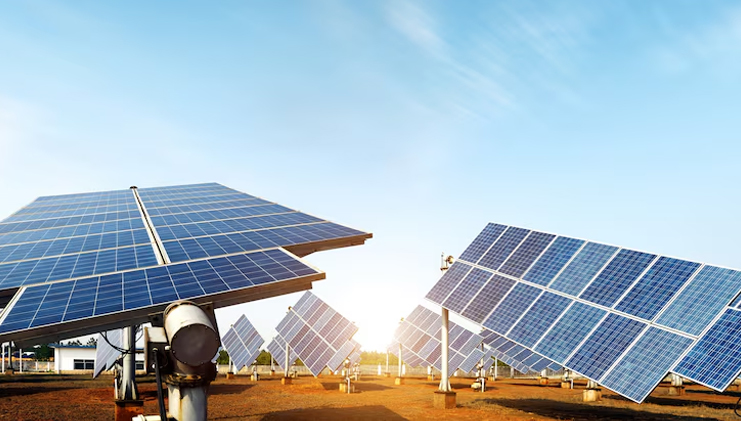
All You Need to Know About Grid Tie Inverter
Grid Tie Inverter is the vital link between your solar panels and the electrical grid.Its primary role is to transform your solar panels' direct current (DC) into alternating current (AC), making it companionable with the grid. This transformative procedure lets you power your home with solar energy and subsidize any excess energy back into the grid.
Why are Grid Tie Inverters so crucial in the grand scheme of solar energy? Picture this: you've invested in a solar power system, and your panels are soaking up the sun's rays, converting them into DC electricity.
Without a Grid Tie Inverter, this energy would be stranded in the field of direct current, unable to power your household appliances or contribute to the grid. Here's where the magic happens – the Grid Tie Inverter steps in to convert that DC electricity into AC, unlocking the full potential of your solar power system.
The importance of Grid Tie Inverters extends beyond mere conversion. These devices are pivotal in optimizing energy efficiency, ensuring your solar panels operate at their maximum potential. This is achieved by implementing sophisticated technologies like Maximum Power Point Tracking (MPPT) which constantly fine-tunes the operating point of your panels to extract the highest possible power from the sun.
How Grid Tie Inverters Work
At its core, a Grid Tie Inverter functions as a translator, converting the DC output from solar panels into AC electricity that can be seamlessly integrated into the electrical grid. Using Maximum PowerPoint Tracking knowledge is significant to its efficiency.
MPPT technology optimizes energy output by ensuring solar panels operate efficiently. MPPT enables the inverter to extract the highest possible power from sunlight. This maximizes the overall efficiency of the solar power system by constantly adjusting the electrical operating point of the solar panels.
General Advantages of Grid Tie Inverters
- Reduction in electricity bills through net metering
Grid Tie Inverters pave the way for substantial savings on your electricity bills through the revolutionary concept of net metering.
This innovative practice allows you to consume the solar energy generated by your panels and feed excess energy back into the grid.
As a result, you receive credits for the surplus electricity, effectively offsetting your consumption during periods of lower solar generation.
This interdependent association with the grid transforms your solar power system into an active asset. It offers financial advantages by decreasing your dependency on traditional grid-supplied power.
- Environmentally friendly operation and reduced carbon footprint
Embracing the power of solar energy through Grid Tie Inverters signifies a commitment to environmental stewardship. The operation of these inverters facilitates a cleaner and greener energy ecosystem.
They improve the use of solar power, reducing the requirement for fossil fuels. It also lessens the related carbon footprint by flawlessly integrating with the electrical grid.
The result is a more sustainable energy model that adapts to climate change and fosters a healthier planet. Choosing Grid Tie Inverters becomes a conscious step toward aligning your energy consumption with environmental conservation.
Transformer-less Grid Tie Inverter and its Benefits
Overview of transformer-less grid tie inverter
The Transformer-less Grid Tie Inverterrepresents a leap forward in solar power technology. This eliminates the traditional transformer to enhance efficiency and reduce size. This also concurs with an extra efficient and operative inverter that provocatively subsidizes the overall performance of a solar power system.
The absence of a transformer streamlines the conversion process, making transformers with fewer inverters, like the Eastman variant, appealing to those seeking optimal energy conversion without the bulk.
Eastman Solar Grid Tie Inverter Features
MPPT Efficiency (Up to 98.5%)
Eastman's Grid Tie Inverter boasts an impressive MPPT efficiency of up to 98.5%, a testament to its cutting-edge technology.
This high efficiency signifies the inverter's ability to precisely track the optimal operating point of solar panels. It converts an outstanding 98.5% of available solar energy into electrical power.
This exceptional efficiency minimizes energy loss, ensuring maximum utilization of solar resources and elevating the overall efficiency of the solar power system.
2. Low DC Startup Voltage
With a low startup voltage, Eastman's Grid Tie Inverter can initiate operation with minimal input power. This feature proves invaluable during low solar panel output periods, such as early mornings or late afternoons.
The ability to start operating with relatively low input power enhances the inverter's performance. It ensures consistent functionality even in challenging environmental conditions.
3. Max. DC Overloading 30%
Eastman's Grid Tie Inverter exhibits a remarkable capability to handle DC power input, exceeding its rated capacity by up to 30%.
This feature is strategically designed to accommodate brief increases in power from the solar panels during conditions of high solar irradiance.
The inverter's flexibility in handling power surges ensures stable and reliable operation, enhancing its resilience in dynamic solar conditions.
4. Wide AC Voltage Range
Grid Tie Inverters must adapt to fluctuations in the electrical grid's voltage, a challenge addressed by Eastman's design. With a wide AC voltage range, this inverter seamlessly adjusts to variations in electricity demand throughout the day.
This adaptability ensures the continuous optimal operation of the solar power system, regardless of the grid's voltage fluctuations. This provides a consistent and reliable energy output.
5. Type II SPD Enabled AC and DC Side
Eastman's Grid Tie Inverterincorporates Type II Surge Protective Devices (SPDs) on both the AC and DC sides. This dual-side surge protection enhances the inverter's resilience by safeguarding the system from voltage surges and transients.
The comprehensive surge protection ensures the longevity and reliability of the entire solar power system. This makes it a robust and secure choice for renewable energy enthusiasts.
6. Eastman App for Remote Monitoring 24*7
Elevating the user experience, Eastman provides a dedicated app for remote monitoring, available on both Android and iOS platforms.
This 24/7 monitoring capability empowers users to observe the real-time performance of their solar power plants via the Eastman Web portal or mobile app.
The app's key aspects include insightful data on energy production and environmental impact. It allows users to make informed decisions and optimize their solar energy investment.

